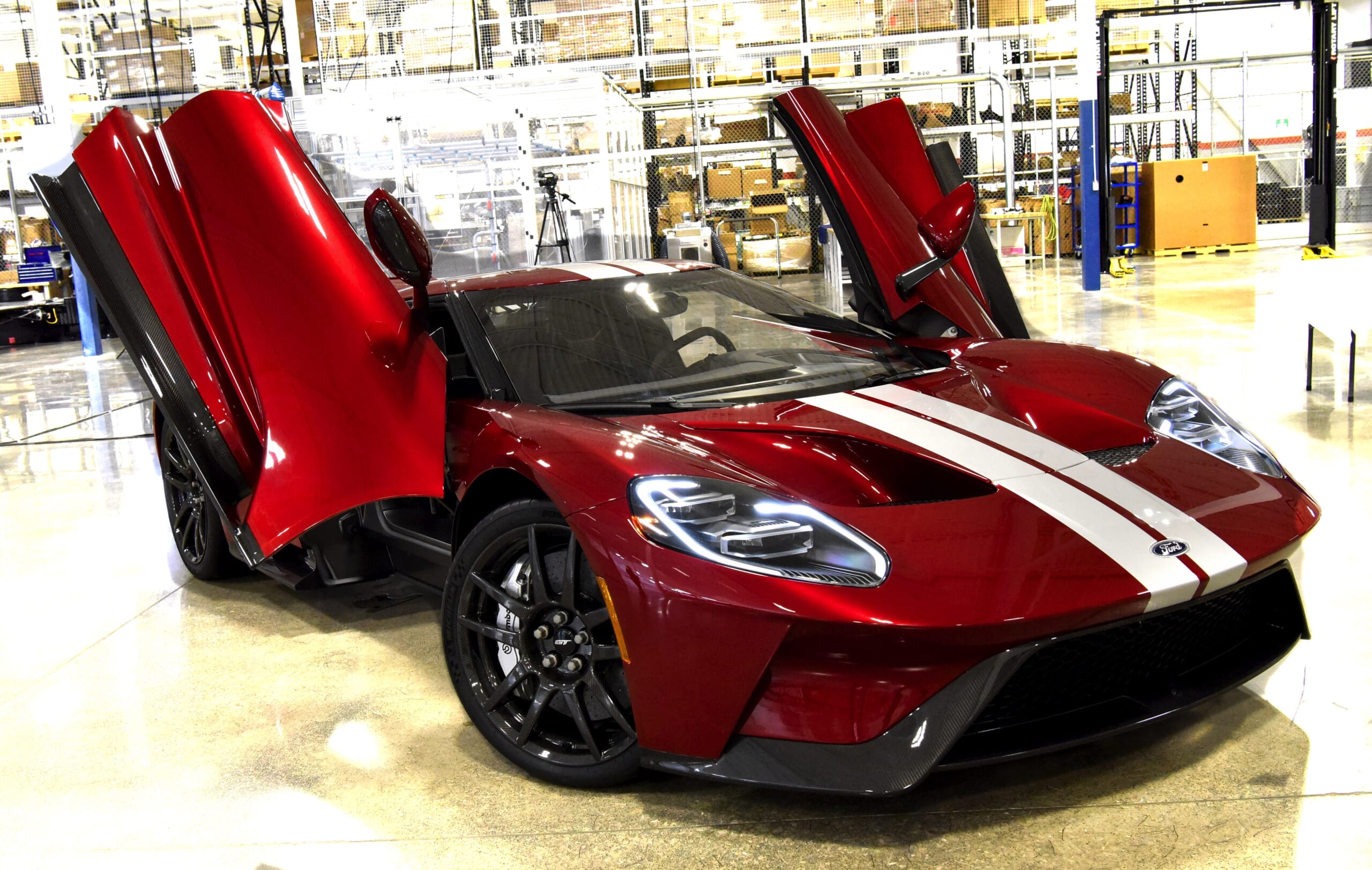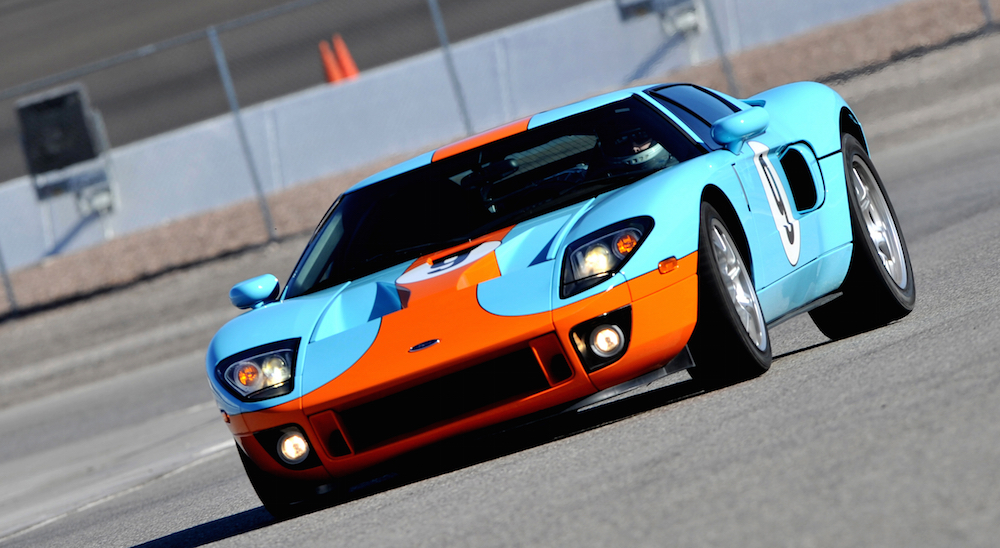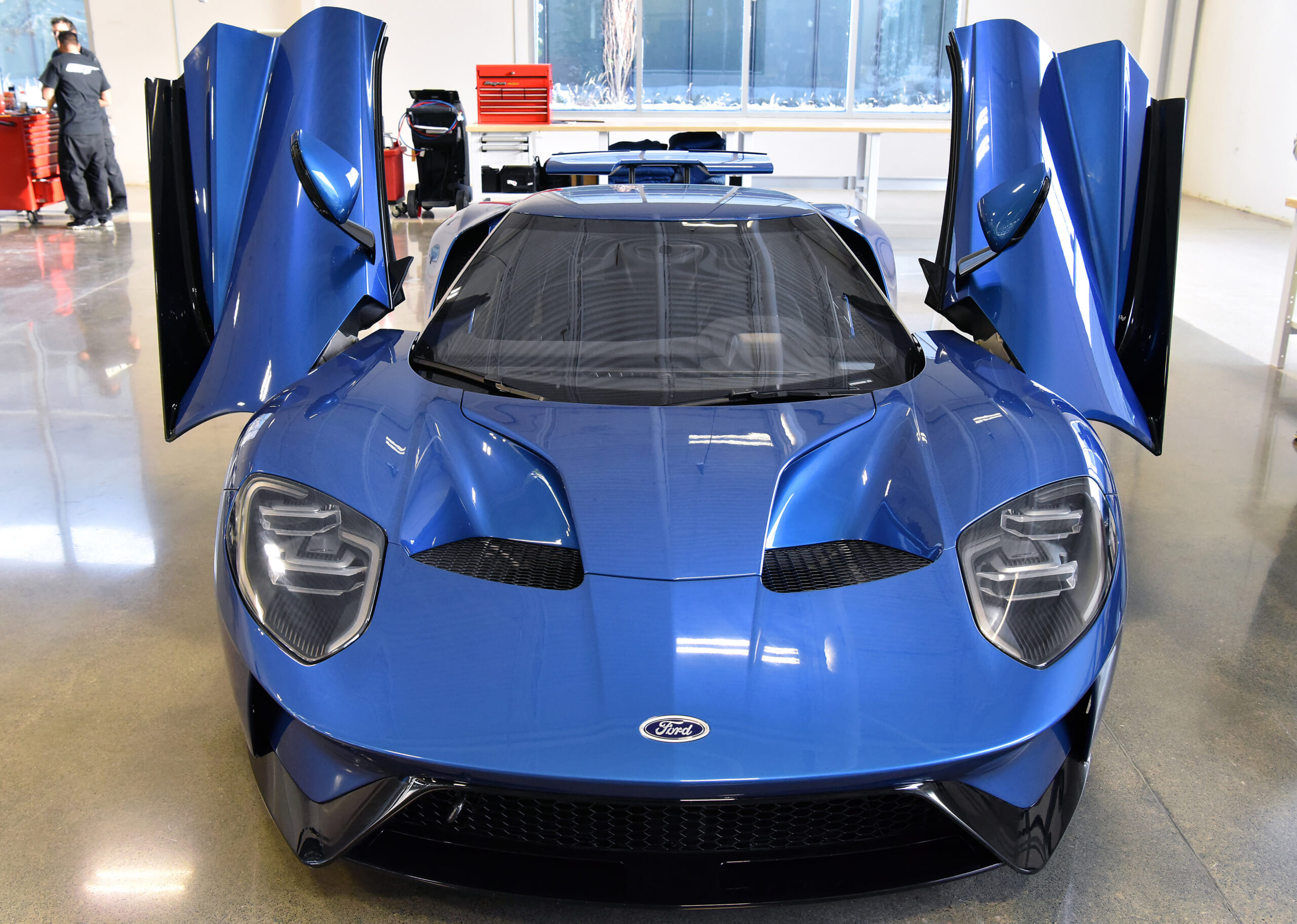The 216-MPH Ford GT Is Officially The Fastest Production Ford Ever
The EcoBoost V6 is good for 647 horsepower and 550 lb.-ft. of torque.

On the eve of the release of the production Ford GT, the Blue Oval boys have finally revealed its official performance numbers, and they are big: a 216-mph top speed produced by 647 horsepower and 550 lb-ft. of torque from the car’s twin-turbocharged 3.5-liter EcoBoost V6 engine.
647 HP and 550lb-ft of torque never looked so good #FordGT pic.twitter.com/RfpihVUp8D
— Ford Performance (@FordPerformance) January 25, 2017
The previous-generation Ford GT of 2004-’06 used a supercharged 5.4-liter V8 that was rated at 550 horsepower and 500 lb.-ft., though the word at the time was that those numbers understated the car’s true power. That car’s official top speed was 201 mph, though Ford executives said that it touched 204 mph during its official run.

The ostensible reason for replacing V8 thunder with a turbocharged EcoBoost V6 engine is fuel efficiency, but power takes fuel, no matter how it is made, so perhaps it is no surprise that the new GT’s official EPA fuel economy number are abysmally bad. As in 11 mpg city, 18 mpg highway and 14 mpg overall.

Consider the Dodge Viper and its antique overhead-valve 8.4-liter V10 engine: That car scores 12 mpg city and 19 mpg highway with an engine producing 645 horsepower and an incredible 600 lb.-ft. torque. The Viper’s old-school naturally aspirated engine might be the business, but its old-school aerodynamics ensure that it can’t approach the Ford GT’s 216 mph.

The GT’s smaller, lighter engine also contributes to its agility in the turns, proved by Ford’s own testing at a Canadian track near Multimatic, the company that actually builds GTs for Ford. At Calabogie Motorsports Park, Ford’s pride and joy ran a 2:09.8 lap, which compared to a 2:10.8 for the McLaren 675LT and 2:12.9 for a Ferrari 458 Speciale tested at the same time.
“The Ford GT is all about performance,” said Raj Nair, Ford’s chief technical officer. “We achieved considerable weight savings with the carbon fiber architecture. We then reinvested some of that savings into where it counts most – performance, specifically, the active dynamics. The result is an even faster car.”
We can’t argue with that.
